The following operating instructions for the K-14 Gyroscopic Gunsight are reproduced from the Pilot Training Manual for the Thunderbolt P-47N, Headquarters, Army Air Forces, September 1945.
As you adjust the K-14 gyroscope gunsight, it automatically gives you the correct lead and shows you the range of the target. In other words, it’s the answer to a poor deflection shooter’s prayer.
Though exceedingly complicated internally, the sight is easy to operate with a little practice.
Actually, the K-14 contains 2 sights: The compensating sight, and an ordinary fixed electrical sight. In the fixed sight, a cross has been substituted for the pipper.
The fixed sight, may be used alone, but ordinarily the cross is employed (with the ring extinguished) to show the amount of lead the gyro sight is allowing.
The gyro sight consists of a dot surrounded by six small diamonds. Your problem is to place the dot squarely on an enemy plane by maneuvering your Thunderbolt, and keep him properly surrounded by the six diamonds until you shoot him down.
Here’s how you do it:
On the front of the device is a span scale, reading 30 to 120 feet. Set this scale to the wing span of the enemy plane. It’s a good idea to leave it set at the wing span of the enemy plane you’re likely to encounter. This forethought might save a couple of seconds at a critical time.
In case your aircraft identification is feeble, set the wing span as shown:
On your throttle is a twist grip. The grip is attached to the sight by cable and pulleys, ending with a range pulley containing a dial calibrated from 2400 to 600 feet.
When the twist grip is full counter-clockwise, the indicator points to 2400 feet on the dial. As you twist the grip clockwise, the indicator shows the range shortening.
As you maneuver to place and keep the dot on the enemy, use the twist grip to adjust the reticle of diamonds, so that the inner points surround him. You must keep the sight on the target for one second before firing to give the sight time to do its work. Fire a burst of at least two seconds.
You may have a tendency at first to use a hexagon formed by inner points of diamonds. Curb it. Use a circle passing through the inner points.
When an encounter is likely, keep your twist grip on the minimum range of 600 feet. Also place it in that setting when shifting from one target to another.
Leave the grip in this position, until the dot is on or near the target, then twist the grip to get the proper frame. This procedure reduces over-ranging, prevents over-correction, and gets you set to fire quicker.
When a plane is at right angles from you—a 90° deflection shot—you can’t use the diamonds to span the wings, even if the plane is banked. On most planes, the distance from the cockpit to the extreme end of tail is about half of the wing span. Therefore, place the dot on the cockpit with the imaginary circle touching the tail.
Note that circle is on extreme end of tail; not just in the assembly.
If neither the wings or fuselage are at right angles, make your imaginary circle slightly larger than the plane to compensate for the part you can’t see.
If wings and fuselage are at 45°, allow 1/6 of the diameter, or 1/3 of the radius, on each side of target, ranging on the tip of the wing and the tip of the tail. This is the maximum allowance. One-tenth of the diameter of the reticle serves for most purposes.
When the separation of the fixed cross and the dot shows that a long lead, around 85 to 100 mils, is being allowed, any small ranging error is magnified by distance and makes long range firing unprofitable. When only a short lead is indicated, small ranging errors are unimportant. Fire at maximum range.
When closing in on a target at ranges of less than 600 feet, ignore the diamonds. Keep the dot on the target and you’ll shoot it down.
Both the gyro and fixed sight are seen on a reflection plate. They are focused on infinity by means of collimator lenses. Parallex has been reduced to a minimum, allowing you to move your eyes without encountering an apparent shift in the relation of target and reticle images.
Operating instructions:
1. On any plane equipped with a K-14 gunsight, before starting the engine, place selector on FIXED and GYRO.
2. Place gun switch on GUNSIGHT and CAMERA.
3. Turn on battery or use outside power source to start gyro.
Note: To avoid damage, gyro must be running during every takeoff and landing. You turn it off only in the event of failure.
4. Turn selector to FIXED—Only ring and cross should be reflected.
5. Turn selector to FIXED and GYRO—The ring and cross, and diamonds and dots should be reflected.
6. Turn selector to GYRO (only diamonds and dot should show).
Note: Diamonds and dots should be clear and sharp.
7. Check that masking lever eliminates the fixed reticle.
8. Check dimmer control—for regulation of brightness of reticles.
9. Check twist grip. Full clockwise range dial reads 600 feet. Counter clockwise—2400 feet.
10. Check lamp bulbs in flight. Open lamp compartment. Feel bulbs. A cold bulb indicates bulb has not been burning.
11. In flight, adjust sun shades.
Operation of the gunsight gyros affects the magnetic compass. A separate compass correction card is mounted on the instrument panel for use when the gunsight is ON. Be sure to use the correct card.

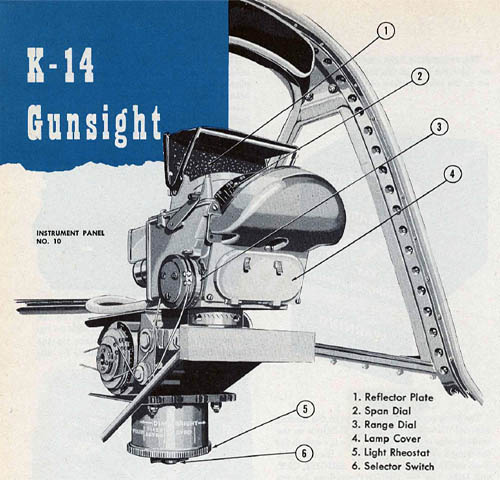
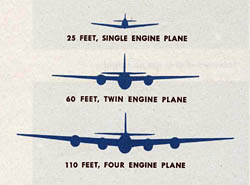
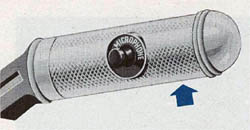
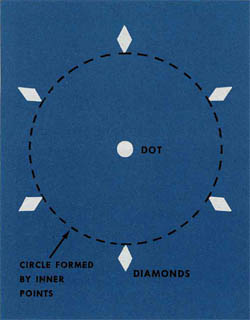


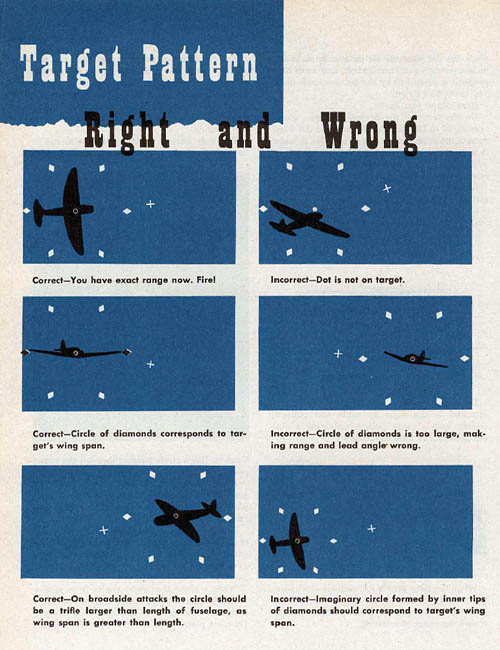









I think if you run into something with four engines on it like in that lower silhouette, you should think twice before firing on it, because unless it’s a FW-200 Condor, you are probably going to be attacking a B-17. 😉
Thank you
nice article
I saw one of these at the salvage yard once.
Pingback: WWII gyro gunsight - Historum - History Forums